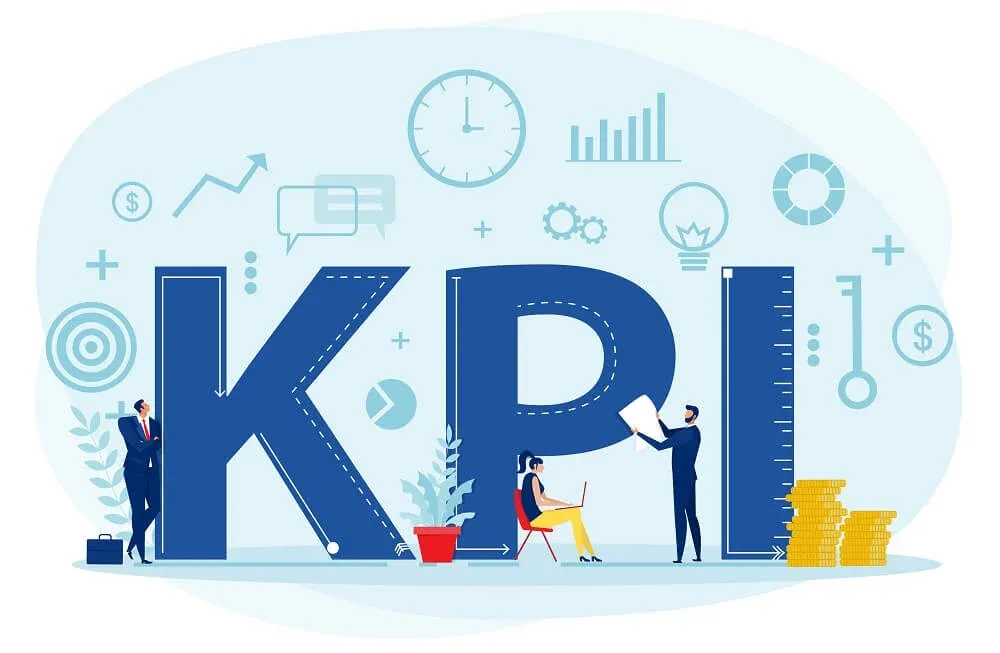11 Business Growth Metrics You Actually Need (and How to Track Them)

Growing your business isn’t just about hustle—it's about knowing where you’re headed. But how do you know if you're on the right track? Easy. Track the right metrics. Think of it like checking your bank balance—painful sometimes, but absolutely necessary.
Metrics like sales, profit margins, and customer retention tell you what’s working and what needs fixing. But not all metrics are created equal. Let’s look at the key numbers that'll help your business grow (without boring you to death).
What’s a KPI Anyway?

KPI stands for Key Performance Indicator, which is just corporate-speak for "is your business actually working?" They're measurable values tied directly to your company's goals. Think revenue, new customer sign-ups, or even something fun like how many coffees your team drinks (maybe skip that last one).
Tracking KPIs helps you quickly spot issues and opportunities, whether you're in sales, marketing, or finance. Basically, it’s your company's report card—but way less stressful.
What Exactly Is a Conversion?

Conversions are when your audience does exactly what you want them to do. Like clicking “buy now” or signing up for your incredibly insightful newsletter (fingers crossed).
Let's say your website gets 1,000 visitors, and 20 of them sign up for a demo. That's a 2% conversion rate. Simple, right?
Low conversions? Maybe your marketing needs tweaking. Thankfully, tools like Google Analytics can pinpoint the exact moment visitors lose interest (ouch).
And hey, if you're into automating this stuff—Leadplay.io can take the pain out of LinkedIn and email conversions.
Why Bother With Metrics?

Because running a business without metrics is like driving with your eyes closed—fast, dangerous, and very likely to crash.
Metrics aren’t just numbers for your quarterly report—they’re your sales compass. They show what’s working, what’s not, and where your next big opportunity lies. Think of them as reality checks for your gut feelings. Sure, you feel like things are going well… but are they really? These key growth metrics will tell you the truth—no sugarcoating.
Revenue Growth: Are You Actually Growing?
It’s the most basic (and brutally honest) question: Are you making more money than last month? Revenue growth tells you if your strategies are actually paying off. If the numbers are going up, great—keep doing what you’re doing. If they’re stalling or dipping, it’s time to dig deeper and adjust course.
Customer Acquisition Cost (CAC): Are You Spending Smart?
Every customer comes at a cost—ads, outreach, onboarding. CAC measures how much you’re shelling out to land each new customer. If that number’s too high, you’re probably working harder, not smarter. A healthy CAC means you're not torching your budget to grow your base.
Customer Churn: Who’s Ghosting You (and Why)?
Churn rate tells you how many customers are waving goodbye each month. High churn? That’s a red flag waving in your face. It could mean poor onboarding, unmet expectations, or better deals elsewhere. Reducing churn = keeping your hard-earned customers and maximizing their lifetime value.
11 Essential Metrics You Should Actually Track to Skyrocket Your Business Growth

Hey there, superstar! Running a business without tracking metrics is like trying to hit a bullseye blindfolded—it might work if you're incredibly lucky, but let's not leave things to chance. Knowing your metrics makes your growth smooth, strategic, and downright satisfying. So let's dive into 11 must-track metrics that'll give your business the boost it deserves.
1. Conversion Rate – Your "Lead to Customer" Magic Number
Let's face it, B2B sales isn't exactly a stroll through the park—unless the park is filled with competitors and tricky customers. Conversion rate helps you see exactly how many leads are turning into paying customers.
It's your GPS to business success. According to HubSpot, businesses with solid lead segmentation see 67% higher conversions. So, keep an eye on this number and fine-tune your strategies to leave your competitors eating dust!
2. Return on Investment (ROI) – The Money Truth Teller

ROI answers the age-old business question: "Did we just throw money into a bottomless pit, or are we actually profiting?" If you spend $500 on marketing and make $2,000 in return, your ROI is 4x.
If your ROI is lower than your caffeine intake, you need to rethink your investments ASAP. Recent stats from Salesforce show that successful businesses aim for at least 5x ROI on marketing spend.
3. Customer Lifetime Value (LTV) – Your Relationship Scorecard
LTV tells you how much a customer is worth to your business over time—think of it as measuring the health of your customer relationships. Companies that master customer loyalty, like subscription-based brands, typically enjoy higher LTV.
A 2024 report from Shopify shows top-performing businesses have an LTV up to 3 times their customer acquisition costs. Now, that's relationship goals!
4. Customer Retention & Churn Rate – The "Stay with Me" Metric

Retaining customers is way cheaper than acquiring new ones. Like, five times cheaper! Your retention rate is the percentage of customers who keep coming back, while churn rate tells you who decided to ghost you (rude, right?).
A churn rate below 5% means you're pretty great at customer love. Anything over 10%? Time to send out some "we miss you" messages.
5. Customer Acquisition Cost (CAC) – How Expensive is Your Charm?
CAC measures what you're spending to acquire new customers. Spend $500 to attract 50 new customers? Your CAC is $10. Ideally, you want to keep your CAC significantly lower than your LTV. According to Gartner, businesses aiming for sustainable growth have an LTV:CAC ratio of at least 3:1.
6. Return on Ad Spend (ROAS) – The Ad Budget Whisperer

ROAS reveals whether your ads are cash magnets or just fancy wallpaper. Spend $100 on ads and earn $1,000? Your ROAS is 10x, making your campaign hotter than trending TikTok dances. According to Nielsen, effective digital ads should hit at least a 4x ROAS. Below that? Tweak or toss those ads!
7. Revenue from New vs. Existing Customers – Who’s Filling Your Piggy Bank?
This metric helps you spot where your cash flow is coming from. If existing customers dominate revenue, you're nailing customer loyalty—but don't forget to attract newbies! Ideally, about 30% of your revenue should come from new customers to maintain healthy growth, according to McKinsey & Co.
8. Website Traffic – The Digital Foot Traffic Indicator

Your website isn't just a digital business card; it's your frontline salesperson. High traffic means more chances at converting visitors. Tools like Google Analytics and Adobe Analytics are your BFFs here. Remember, low traffic? That's your website crying out for some SEO and UX love. Businesses with optimized websites typically see 50% higher conversion rates.
9. Sales Revenue – Your Top-Line Bragging Rights
Revenue is the simplest and most crucial metric to track. It tells you straight up if your products and services are selling. Track trends, seasonal highs, and lows to strategize better. Increasing revenue steadily year-on-year? Pat yourself on the back, you legend.
10. Net Profit Margin – The Real "Keep-What-You-Make" Metric
Net profit margin shows what percentage of your sales you actually get to keep after expenses. If your net profit margin is 20%, you keep $20 from every $100 sale.
Increasing this means being smarter with expenses or boosting prices—strategically, of course. Forbes notes that most successful small businesses maintain at least a 10-15% net margin. How are you stacking up?
11. Gross Margin – The Cost Control Guru

Gross margin measures your profit per sale before factoring in operational costs. A healthy gross margin (generally around 40-60% depending on industry) means you're pricing right and keeping production costs in check. If your gross margin shrinks faster than ice cream in July, reassess your pricing or operational efficiency pronto!
Wrapping It Up (No More Metric Anxiety)
Metrics aren’t exciting—but they’re lifesavers. Track them regularly, make adjustments, and watch your business grow.
And remember, you don't have to do it alone. Tools like Leadplay.io help automate tedious tasks so you can focus on the fun stuff—like actually growing your business. Happy tracking!